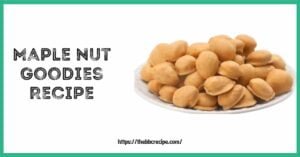Embarking on a journey to explore the world of sumac tea is akin to discovering the hidden gems within the shrubbery of our surroundings. The staghorn sumac plant, scientifically known as Rhus typhina, is a deciduous wonder that graces the landscapes of eastern North America.
Contents
- 1 Read Also: Elevate Your Sweets [Recreate] Great Value Chocolate Chip Cookies!
- 2 Read Also: Bite into Bliss: Master the Art of Yats Bread Making Today!
- 3 Read Also: Taste the Extravaganza: [Secret] La Madeleine Chicken Salad Recipe!
- 4 Read Also: Lunchtime Luxury: [Exclusive] Wawa Chicken Salad Recipe Unveiled!
- 5 Read Also: Master the Taste: Dive into [Homemade] Texas Roadhouse Honey Mustard!
Table of Contents
Imagine stumbling upon large stands of these shrubs, their red berries forming clusters that beckon to be explored. This small tree, a member of the Family Anacardiaceae and the Genus Rhus, stands proud, reaching up to 16 feet in height and spanning 20 feet in width. As an individual who has delved into the marvels of this native foliage, I find that its ornamental appeal is unmatched, especially when basking in a full sun location.
WHAT IS SUMAC?
Sumac, a versatile shrub that graces the landscapes of eastern North America, unveils its secrets in the form of vibrant red berries, adorning clusters that beckon exploration. This deciduous wonder, known scientifically as Rhus typhina, belongs to the Family Anacardiaceae and the Genus Rhus, standing proud as the staghorn sumac plant.
Read Also: Elevate Your Sweets [Recreate] Great Value Chocolate Chip Cookies!
In my encounters with this native foliage, I’ve marveled at its ability to thrive in the wild, forming large stands that paint the scenery. From the perspective of an enthusiast, the allure lies not just in its attractive appearance as an ornamental tree, standing 16 feet tall and spanning 20 feet wide, but in the intricate dance of its underground rhizomes, forming small groves that capture the essence of nature’s resilience.
The Leaves
Staghorn sumac unfurls its story through its distinctive compound leaves, arranged in an alternate fashion, creating a staggered pattern along the stem. Each leaf showcases a symphony of serrated leaflets attached to a central stalk. During the growing season, these leaves exhibit a vibrant green hue, and as fall approaches, they transform into a spectacle of deep orange and brilliant red colors, contributing to the tree’s ornamental appearance.
My hands on experience with these leaves revealed a unique charm, especially in their leaf petioles and stems adorned with a velvet-like covering of fine hairs, reminiscent of the antlers of a stag. This touch of nature’s artistry adds an extra layer of beauty to the process of crafting sumac tea, turning it into a sensory exploration of colors and textures.
The Fruit
As fall blankets the landscape, the staghorn sumac shrubs transform, presenting their fruit in dense clusters. These small, red, berry like drupes, ranging from 4 to 8 inches, captivate with their individual berries, each about the size of a pea.
Read Also: Bite into Bliss: Master the Art of Yats Bread Making Today!
What sets them apart is the presence of fine red hairs, rendering these berries fuzzy in appearance. Unlike typical berries, they form a cone like structure that points upwards rather than hanging down. Harvesting these edible gems for sumac tea reveals their juicy, tart citrus flavor. Yet, the fuzzy hairs make them challenging to eat, with minimal pulp and mostly seed, offering a delightful crunch and a nice tart taste. My culinary exploration with these berries led to the discovery of their versatility they contribute to not only the classic sumac tea but also to tart sumac simple syrup, sumac jelly, and even sumac soda. The process of picking the clusters, though a bit sticky to the touch, is a rewarding endeavor, unveiling the essence of the sumac flavor that enriches various concoctions.
Important Tools

Large Pitcher
- Essential vessel for containing the essence of staghorn sumac berries.
- Serves as the canvas for the crafting process, enhancing the overall experience.
Fine Mesh Strainer
- Crucial tool for precision in the sumac tea-making journey.
- Filters out unwanted particles, ensuring a smoother brew.
Cheese Cloth or Coffee Filter (Optional)
- Optional but rewarding addition for those seeking an even smoother tea.
- Adds an artisan touch to the process, elevating the final product.
Essential Ingredients
Create a delightful cup of Sumac Tea by following these simple steps and carefully selecting your Ingredients:

Sumac Berry Infusion:
- In a large container, combine 4 handfuls of sumac berry clusters with cool water.
- Allow the vibrant essence of sumac berries to infuse the liquid, imparting a unique tartness.
- Sweeten to your liking with Honey or Sugar, adding a personalized touch for depth of flavor.
Flavor Enhancements (Optional):
- Mint Leaves: Introduce a refreshing note that complements the tanginess of sumac.
- Peach Pieces: Infuse a delightful fruity sweetness into your brew.
- Blueberries and Raspberries: Elevate your tea with bursts of berry goodness.
Remember, these enhancements are entirely Optional, giving you the flexibility to tailor your Sumac Tea to match your unique taste preferences. Embrace the art of tea-making, experiment with different combinations, and discover the perfect blend that resonates with your palate. Enjoy the harmonious fusion of sumac’s natural goodness and your personal touch in every sip.
Read Also: Taste the Extravaganza: [Secret] La Madeleine Chicken Salad Recipe!
Away From Poison Sumac: Crafting the perfect cup of Sumac Tea requires attention not only to the delicious flavors but also to safety. Avoiding Poison Sumac is crucial, as it belongs to the same family, Genus Toxicodendron, as the harmless staghorn sumac.
Distinguishing between them is key; while staghorn sumac boasts vibrant red clusters, poison sumac displays white berries in a pendulous manner. Familiarize yourself with the toxicodendron vernix plant’s appearance to steer clear of mistakenly using it in your tea. Focus on harvesting the vibrant red clusters of staghorn sumacs for a delightful and safe brewing experience.
Step By Step Process to Make Sumac Tea
Embark on the journey of crafting Sumac Tea with these Step by Step Instructions:

Step 1: Gather Sumac Berries
Begin by collecting approximately 4 handfuls of sumac berries. Quickly rinse the sumac drupes, ensuring they are free of debris.
Step 2: Prepare the Berries
Give the berries a gentle stir, brushing the outside of the clusters with a spoon. Crush the berries to release their essence, contributing to the tea’s unique sour flavor.
Step 3: Infuse the Berries
Allow the berries to infuse the cold water as you stir the mixture. Cover and steep the concoction in the sun for about 4 hours, creating what is often referred to as “sumac sun tea.” Alternatively, place the container in the fridge overnight, letting the berries infuse the tea at a slower pace.
Step 4: Strain the Tea
Once the tea has finished infusing, strain it using a fine mesh strainer or cheesecloth to collect any fine hairs from the berries.
Step 5: Customize the Flavor
At this step, you can add additional ingredients if you wish to enhance the flavor. Sweeten to your taste and serve over ice, delighting in the refreshing taste of your homemade sumac tea.
Step 6: Bonus Tip Utilize Strained Berries
Don’t forget to collect the strained berries, which can be used in a multitude of culinary creations. The step of infusing the berries in the sun or fridge is not just about flavor; it’s a process that allows the sumac to fully release its potential health benefits, making your homemade sumac tea a delightful and nutritious choice.
What Are the Benefits of Sumac Tea?
- Cool Tea Drink: Sumac tea is not just a health boosting elixir but also a refreshing cool tea drink that satisfies the palate with its unique flavors.
- Vitamin C Content: Delight in the fact that your sumac tea is not only enjoyable but also packs a punch in terms of vitamin C content, contributing to your daily nutritional intake.
- Heated Tea (Optional): While sumac tea is traditionally enjoyed as a cool beverage, for those chilly days, consider trying it as a heated tea to experience a different dimension of warmth and flavor.
- Reduce (Prevent Scurvy): Historically valued for its ability to reduce the risk of scurvy, sumac tea’s use in preventing this condition adds an interesting layer to its profile.
- Preserve Vitamin C Levels: The unique method of preserving the sumac’s vitamin C levels through the tea-making process ensures that you reap the full benefits of this essential nutrient.
- Michigan State University Research (Optional): For those intrigued by the scientific aspect, delve into Michigan State University research on sumac tea to gain a deeper understanding of its potential health benefits.
Who Should Avoid to Drink Sumac Tea?
While sumac tea is generally safe, some individuals may experience adverse reactions when consuming new foods or drinks. It’s important to be aware of food safety and the potential for allergic reactions. Caution is advised for those allergic to the sumac plant, particularly as the plant is related to cashews and mangoes known allergens for some.
Read Also: Lunchtime Luxury: [Exclusive] Wawa Chicken Salad Recipe Unveiled!
Additionally, for individuals with concerns about blood sugar regulation, it’s uncertain how sumac tea may impact levels. It’s always wise to check with your doctor before consuming sumac tea, especially if you’re uncertain about its effects on your health. As with any herbal infusion, use in moderation to ensure a safe and enjoyable experience.
Serving Suggestions for Sumac Tea

- Sweeten to Taste: Customize your sumac tea by sweetening it to your preferred level, enhancing the overall flavor to suit your taste buds.
- Adjust Berry Quantity: Experiment with using less berries or adjusting the water to berries ratio for a more balanced and milder brew, ensuring a satisfying experience.
- Sumac-Infused Ice Cubes: Get creative by freezing leftover tea into sumac infused ice cubes. These not only add a unique touch to your drinks but also slowly release the essence of sumac as they melt.
- Vodka Infusion (Optional): Elevate your sumac tea into a delightful cocktail by adding vodka. This adult twist adds an extra layer of enjoyment for special occasions.
- Creative Garnishes: Consider decorating your drinks with sumac infused ice cubes, adding flair and a burst of flavor as they slowly dissolve.
- Storage for Later Use: Store any remaining sumac tea in a sealed container in the fridge. It keeps well for several days, providing the opportunity to enjoy the refreshing beverage at your convenience.
Final Thoughts
Dive into the art of crafting Sumac Tea, a beverage deeply rooted in tradition and culinary creativity. Edible sumac berries, cherished by First Nations peoples, have stood the test of time, offering a blend of traditional and wild flavors. Consider harvesting the ripe berries of staghorn sumac in late August to infuse your tea with the essence of the wild. This naturally sweet, tart drink, with its lemony taste, serves as more than just a delightful refreshment.
It’s a delicious and nutritious beverage enriched with immunity-boosting antioxidants. Beyond the tea, explore the versatile world of sumac recipes, from sumac simple syrup to sumac jelly, allowing you to savor the essence of this wild plant in various culinary delights. As you sip your sumac tea, you partake in a timeless tradition, connecting with nature through a sip of history. In your culinary journey with sumac, every sip becomes a nod to the past and a celebration of the bountiful flavors that nature graciously provides.
Read Also: Master the Taste: Dive into [Homemade] Texas Roadhouse Honey Mustard!
FAQs:
CAN YOU MAKE HOT SUMAC TEA?
Yes, you can definitely make hot sumac tea if you prefer, instead of making a cold tea.



























